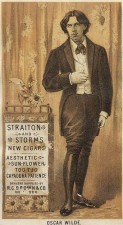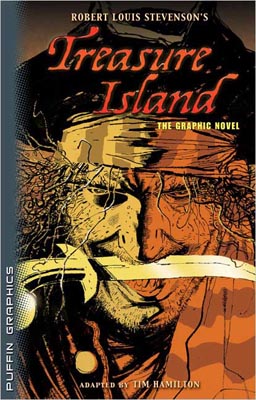Yesterday, as I was searching for descriptions of San Francisco Theaters in 1880 (I am hoping to have a scene in a theater in my next historical mystery, Bloody Lessons), I ran across the following paragraph and laughed out loud.
“Last evening, as I was hurriedly walking along Dupont street, near Post, in the gloaming, I saw before me a young dude, who, instead of minding his business of walking decently, was projecting his face and hat into the visage of his girl companion to the left, while with his dexter paw he twirled a light cane, which extended half way across the curbstone, and which I tried to escape, but which, notwithstanding, hit me square upon my nose, which is a long one.” Etiquette on the Street, by Silver Pen in San Francisco News Letter and California Advertiser Jan 9, 1886
You see, I am a fan of the movie the Big Lebowski, whose main character called himself “The Dude” and spoke of himself in the third person, and, as a result, the use of the word dude in this 19th century context cracked me up.
The next thing that occurred to me is that if I tried to use the word dude in my 19th century fiction, I would probably bring the reader right out of the moment because it would sound so modern. As I investigated the word and its meanings, I discovered that the term has undergone a profound transformation from its 19th century origins to its modern-day uses.
In 1883, when the above paragraph was written, the term dude was very new. A history of the word in Wikipedia says that the word first appeared in print in the 1870s in Putnam’s Magazine, making fun of how a woman dressed. However, a variety of sources, including the Merriam-Webster Dictionary, agree that by the 1880s it had become American slang for “a man extremely fastidious in dress and manner,” often suggesting that they were aping the style of the English upper
 In other words, dude meant a dandy. While most sources agreed that the first printed use of the term with this meaning was 1883, obviously three years later the humorist complaining about modern mores felt comfortable that his readers would understand his use of dude when describing the rude young man who was strolling down a San Francisco street, twirling his cane. I am inserting a picture of Oscar Wilde, who was considered the personification of a dandy, from his 1882 tour.
In other words, dude meant a dandy. While most sources agreed that the first printed use of the term with this meaning was 1883, obviously three years later the humorist complaining about modern mores felt comfortable that his readers would understand his use of dude when describing the rude young man who was strolling down a San Francisco street, twirling his cane. I am inserting a picture of Oscar Wilde, who was considered the personification of a dandy, from his 1882 tour.
At the exact same time, the word was taking on another, albeit related, meaning, as the term dude began to be used (for the first time in 1883 in the Home and Farm Manual) to describe men from the city (Easterners) who demonstrated their lack of knowledge about rural life (the West) by behaving and dressing inappropriately.
These two uses of the term were clearly related since to a working rancher or farmer there would be nothing more ridiculous than some dude (whether from an eastern or a european city), who came to the American West, dressed in fancy duds and pretending to be a cowboy.
By the early 20th century the term began to be applied to ranches that catered to these eastern “city slickers.” In fact, in the mid 1960s, my very suburban family spent a week on a “Dude Ranch” in upstate New York, where we rode horses, went on hay-rides and did square dances in a barn. If you had asked me the meaning of the word then, I would have clearly understood it to mean “city slicker.”
Yet, by the late sixties the term had also become a general form of slang used by men when addressing other men, and it seemed to have emerged within urban Black culture. As a young adult in the late sixties (who spent the summer of 1968 taking classes and living in a dorm at the traditionally all black college, Howard University, and then spent a good deal of time the next two years hanging out with my future husband who lived in the primarily African-American male dormitory at Oberlin College) I had become used to African-American men referring to each other as dude. Unlike its original meanings, this was a positive form of address, and it had nothing to do with city slickers.
Pretty quickly, whites who wanted to sound cool, expropriated the term (it shows up in the movie, Easy Rider) and by the mid-to-late 1970s, just about the time I arrived in Southern California, the term became associated with that region, specifically attributed to “stoners, surfers, and skateboarders.” See the Urban Slang Dictionary.
Robert Lane who has written a piece on the word, points out that int 1982 Sean Penn’s character, Jeff Spicoli, in the movie Fast Times at Ridgemont High, personified the kind of young man who was called, and called others, dude.
While this new use of dude, as an informal form of address among young people, began to predominate, the older meanings didn’t fade away completely. My young daughter, for example, loved the TV show Hey Dude (1989-1991) that was about a dude ranch, not stoner skateboarders. Nevertheless, in my own mind, this earlier meaning of the word was wiped out completely after I watched Jeff Bridges in the Big Lebowski in 1998.
This movie about a grown up man, Jeff Lebowski, whose days are filled with bowling, smoking weed, and sliding through life, has become a cult favorite, and it has created an indelible image of what could happen to the Spicolis of the world if they never grew up.
Interestingly, when I thought more about it, I realized that the writers of the movie (the Coen Brothers) were clearly aware of the changes the term had undergone from its earlier origins. For example, the movie is narrated by a character (called The Stranger and played by Sam Elliott), who is a quintessential cowboy. A cowboy who wryly references the change in the meaning of the word dude from city slicker to stoner slacker in this opening monologue:
“Way out west there was this fella… fella I wanna tell ya about. Fella by the name of Jeff Lebowski. At least that was the handle his loving parents gave him, but he never had much use for it himself. Mr. Lebowski, he called himself “The Dude”. Now, “Dude” – that’s a name no one would self-apply where I come from. But then there was a lot about the Dude that didn’t make a whole lot of sense.” The Stranger, The Big Lebowski
What does this all mean for me as a writer of historical fiction set in the 1880s? First of all, I can’t prove that any of my characters would use the word dude, in either of the earlier meanings–of dandy or city slicker–in 1880, when my next book is set, since I can’t prove they would have heard of it that early. However, the fact that the writer of the 1886 quote used the word without feeling the need of any explanation does suggest that I would not be committing any major historical inaccuracy if I did have someone use the word in either of its original meanings.
Yet, when I read the word yesterday, all I could think of was Jeff Lebowski, in his ancient knitted cardigan, sloppy t-shirt, and baggy bermuda shorts, ambling down the street with his bowling bag in hand, and I was no longer in the 19th century, and I was certainly not thinking about a young man who was “extremely fastidious in dress and manner.” Here the modern meaning and use of the term was just too far from its origins to be an effective word to use in a work of historical fiction set in 1880. Consequently, it was with reluctance I gave up trying to figure out in what context one of my characters could call another Dude.
But I did have fun exploring the origins of the word, and I hope you had fun reading about it. Furthermore, I recommend that you click on this link and read the rest of Silver Pen’s 1886 diatribe on Etiquette on the Street because I think it will make you laugh, even if you aren’t a Big Lebowski fan.
And for the Lebowski fans among you, let me conclude by quoting from the end of the film:
The Dude: Yeah, well. The Dude abides.
The Stranger: The Dude abides. I don’t know about you but I take comfort in that. It’s good knowin’ he’s out there. The Dude. Takin’ ‘er easy for all us sinners.
This is a reprint from M. Louisa Locke‘s blog.


